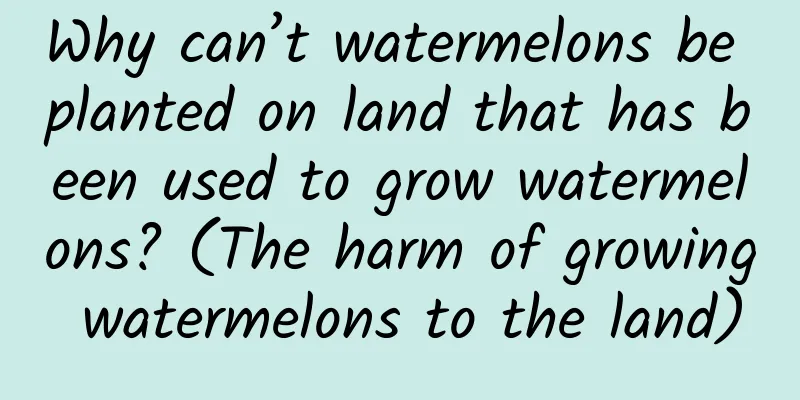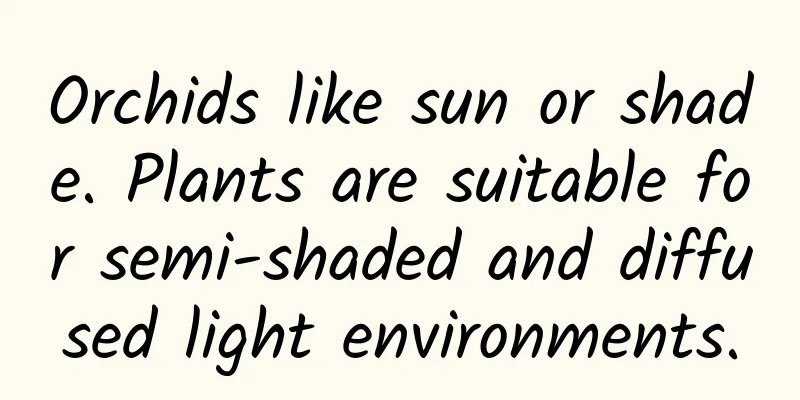Why can’t watermelons be planted on land that has been used to grow watermelons? (The harm of growing watermelons to the land)

|
The reduction in yield of any crop is nothing more than the result of seeds, fertilizer, water, disease, weather, etc. The poster said that planting other crops on the land where watermelons were planted will reduce yield. If natural factors such as wind, rain, hail, frost and other natural disasters are excluded, it may be: 1. The crops grown are melonsAfter watermelon has been planted in the same plot of land for many years, it is easy to be infected with soil-borne diseases such as wilt and vine blight. Therefore, it is generally not suitable for three consecutive years. The land should be rotated or grafted seedlings should be planted to avoid it . If the land where watermelons are planted has been infected with soil-borne diseases such as wilt and vine blight, then when you plant melons, pumpkins, cucumbers and other melon crops in the next crop, these soil-borne diseases are likely to occur, which will ultimately lead to a reduction in the yield of the next crop . Therefore, for land where watermelons have been planted, it is best to plant non-melon crops such as corn, wheat, millet, and rapeseed as the next crop to avoid diseases that may cause reduced production or even total failure of production . Like the watermelon farmers here, they plant corn after harvesting watermelons, or intercrop ginger with watermelons in greenhouses. The results are good and there is no reduction in production. If you plant melons and Fusarium wilt is serious, it will cause vine withering, serious yield reduction, or even no yield. Even if there are no soil-borne diseases such as Fusarium wilt, the self-toxicity of the root system will cause poor growth and development of melons and cause a reduction in yield. 2. Malnutrition or overnutritionWatermelon roots are deep and wide, with the main root reaching more than 1 meter deep and the lateral roots spreading out to 4-6 meters. The fruits are numerous and large, so the demand for fertilizer is very high. Watermelon's demand for nitrogen, phosphorus and potassium is potassium, phosphorus is the least, and nitrogen is in the middle. Watermelon is a high-potassium crop. The growth and development of watermelon requires not only the three major nutrients of nitrogen, phosphorus and potassium, but also calcium, sulfur, iron, zinc, boron, copper, molybdenum and other trace elements. If we neglect the application of a certain element during watermelon planting, or use a small amount, resulting in a decrease in the content of this nutrient element in the soil, when you plant the next crop, it may cause nutritional deficiency in the crop, and ultimately cause a reduction in yield due to nutrient deficiency. Watermelon needs the most potassium. If we don't supply enough, the watermelon plant will take away a lot of potassium from the soil, causing the potassium content in the soil to decrease. Potassium is also known as a quality element, and is a fertilizer for strong seeds, strong stalks, and disease resistance. Since potassium is recyclable, the symptoms of potassium deficiency in subsequent crops have a long latent period. At the beginning, the crops will not immediately show symptoms of potassium deficiency, but will only grow slowly, and the symptoms will not appear until the fruit is ripe. For example, corn ears are small, grains are not full, and the tips are bald. Wheat has poor maturity, the seed setting rate is reduced, and the unfruitfulness rate is increased sharply. Sweet potato pieces are small and uneven, and in severe cases, no sweet potatoes are produced. Cotton has premature aging, the bolls are poorly developed, small in shape, and many are dead bolls. Rapeseed pods are scarce, and most of them are short or twisted. Soybean pods are few and the grains are not full. Cucumber fruits are poorly developed, and most of them are deformed. There are other phenomena of reduced yields in subsequent crops. Similarly, if watermelon absorbs a large amount of calcium, iron, manganese and other trace elements from the soil during its growth process, and we do not provide timely supplements. When we sow the next crop, due to the equal importance, irreplaceability and limiting factors of the nutrients, the next crop will suffer from poor growth or plump fruits, etc. In addition, if we apply excessive fertilizer during the growth and development of watermelons, it may also affect the growth of the next crop and cause a reduction in yield. For example, excessive nitrogen fertilizer will cause the next crop to grow too long, easily fall over, and be susceptible to disease, resulting in a reduction in yield. Excess phosphorus affects the absorption of trace elements such as zinc by subsequent crops, leading to reduced yields; excess magnesium will hinder the growth of subsequent crops, ultimately leading to reduced crop yields. If you find that the watermelon crop after you harvest has signs of reduced yield, you must be careful to identify whether it is disease, nutrient deficiency, or excess nutrition, and then treat it accordingly, such as adding organic fertilizer, strengthening disease prevention, etc., to try to avoid a reduction in the yield of your crop. |
Recommend
What are the methods of propagation of Patchouli?
Seed propagation of Patchouli The seeds of Patcho...
Which month is suitable for sowing spinach?
Although growing spinach may seem simple, it is n...
Can the rubber tree be grown hydroponically?
Nutrient solution If you want to carry out hydrop...
Why does Charizard turn into water?
1. Low temperature causes It is a plant that like...
What are the diseases and pests of potted flowers
Disease 1: Late spring cold harm This is a non-in...
Advantages and Disadvantages of Naples Roses
Naples is a Danish miniature rose variety . The p...
What to do if the lotus leaves wither
1. Improper fertilization 1. Too much fertilizer ...
The efficacy and function of Astragalus, pictures of Astragalus
1. The efficacy and effects of Astragalus Improve...
How does Kalanchoe survive the winter?
temperature The temperature for growing Kalanchoe...
The efficacy and function of holly
The ornamental function of holly Holly trees have...
Causes and treatments for yellowing leaves of Prunus mume
1. Overwatering Reason: Prunus mume prefers a hum...
How to prune roses
Pruning steps/methods Pruning after first floweri...
How to grow long-leaf fern
1. Cultivation medium When cultivating long-leaf ...
What is the best month to plant highland barley?
When is highland barley planted? Highland barley ...
Four seasons maintenance method of fortune tree
Spring breeding and maintenance methods Adequate ...









